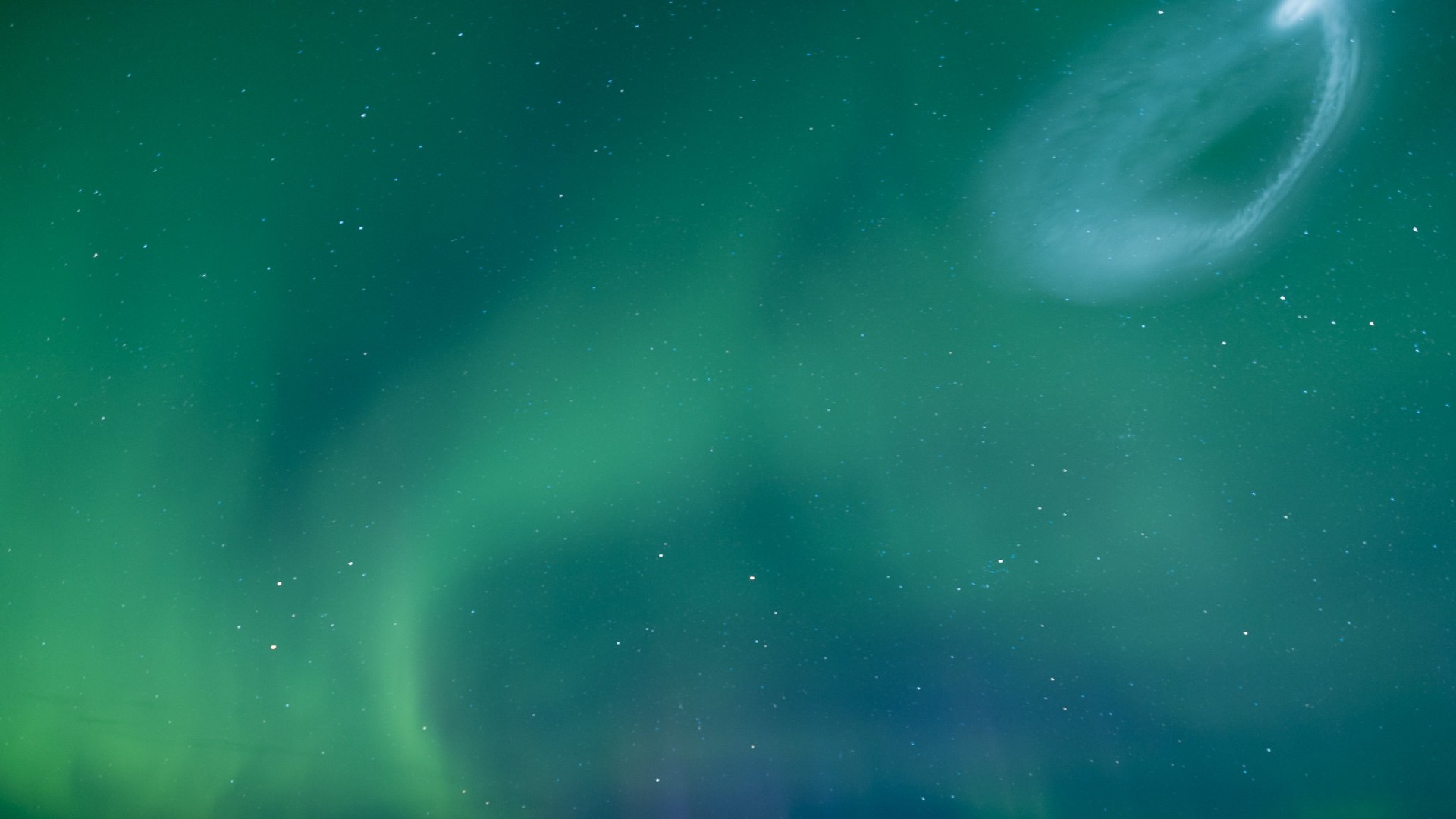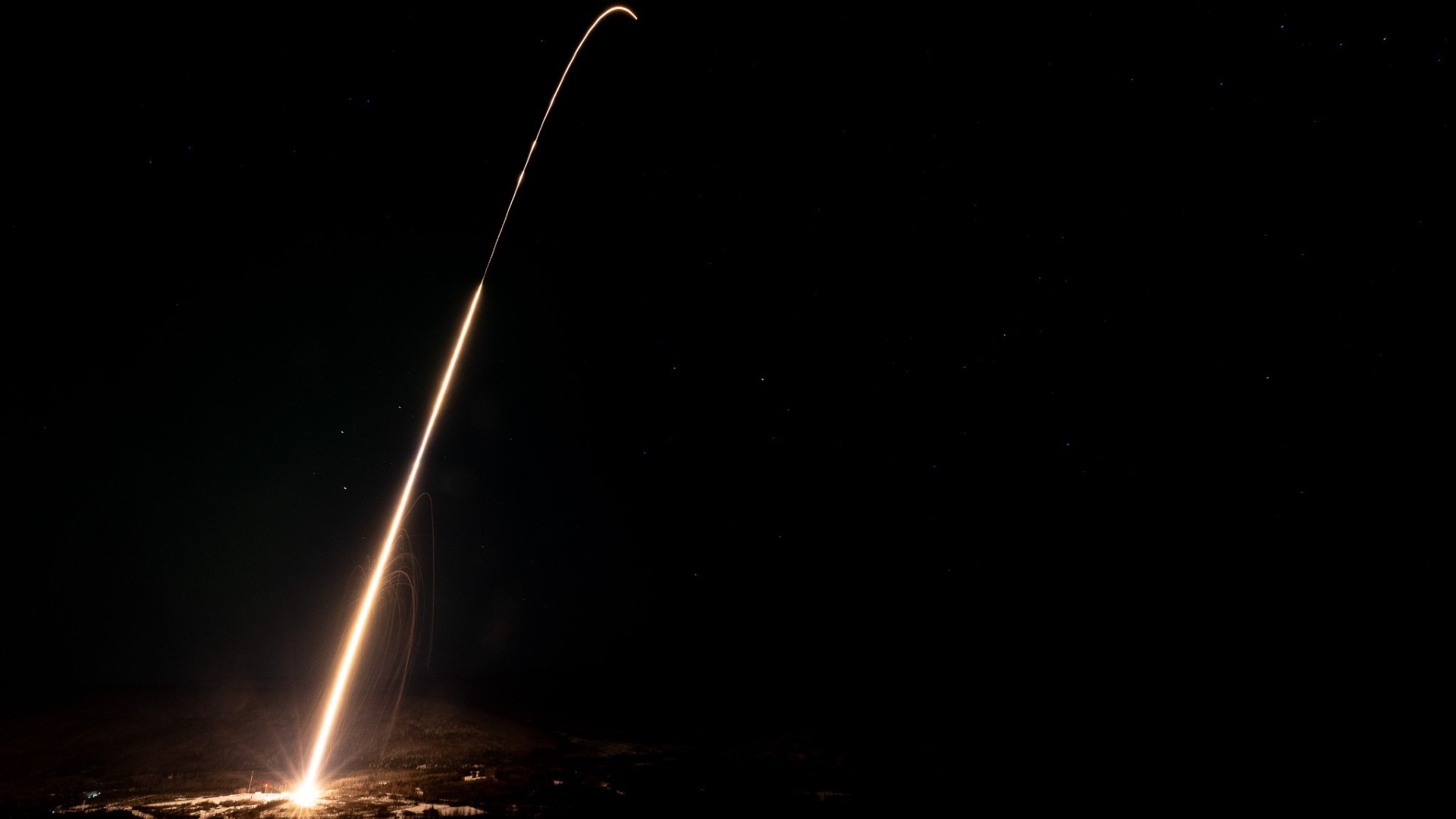Two NASA rockets launched into auroras over Alaska last week to study the impact that these geomagnetic light shows have on Earth’s upper atmosphere, and the results were gorgeous.
The experiment, called Auroral Waves Excited by Substorm Onset Magnetic Events, or AWESOME, is led by researchers from the University of Alaska Fairbanks (UAF). Two of three planned sounding rockets launched from the Poker Flat Research Range north of Fairbanks, Alaska, in the early morning hours on March 25.
As the two rockets flew high into auroras, they released puffs of gas known as vapor tracers that created colorful light shows visible across much of northern Alaska. The movements of these vapor tracers can be recorded and studied from the ground used to measure atmospheric winds and flows of charged particles in the upper atmosphere and ionosphere, according to NASA.
“I’m extremely pleased that we were able to get the conditions to line up to allow us to launch and to conduct the experiment,” Mark Conde, lead researcher from the Geophysical Institute and UAF space physics professor, said in a statement. “I am absolutely delighted.”
Related: 32 stunning photos of auroras seen from space
The first sounding rocket to launch for the experiment was a 42-foot Terrier-Improved Malemute rocket.

Shortly after, a 70-foot, four-stage Black Brant XII rocket launched. The sounding rockets released vapor tracers and pressure sensors at different heights across central and northern Alaska during a sudden auroral substorm, which is a sudden, brief, and explosive intensification, or brightening, of an aurora. The Malemute rocket also measured magnetic perturbations caused by the aurora.
The small free-flying instruments released during the experiment will help gauge how the energy and momentum injected into Earth’s middle and lower thermosphere by auroral substorms may disrupt its stability. Understanding the interaction between Earth’s upper atmosphere and auroras — which are caused by charged particles from the sun interacting with Earth’s magnetic field and atmosphere — can, in turn, help improve space weather forecasting.

During the launch, UAF student and staff researchers were located at ground stations in Utqiagvik, Kaktovik, Toolik Lake, Eagle, Venetie, and Poker Flat in Alaska, allowing project scientists to get many different views of the experiment.
“Because we had the two-stage rockets deploying over central Alaska and the four-stage rocket deploying off the north coast of Alaska, we essentially were conducting two independent tracer experiments at the same time,” Conde said in the statement. “And because the camera locations we needed were completely different for each of those rockets, we needed many camera sites to be clear at the same time.”
The launch of the third rocket — a two-stage Terrier-Improved Malemute — was delayed due to an issue with the motor that needed to be assessed for repair. The team is investigating a minor anomaly in a wiring harness for one of the motor stages and hopes to launch the third rocket before April 6, when the experiment’s launch window closes, according to the statement.
The third rocket is expected to launch additional tracers, which must be released during dawn hours so that sunlight shining in the upper altitudes can activate the vapor tracers while it is still dark enough on the ground for cameras to photograph their response to air movement.
Originally posted on Space.com.
